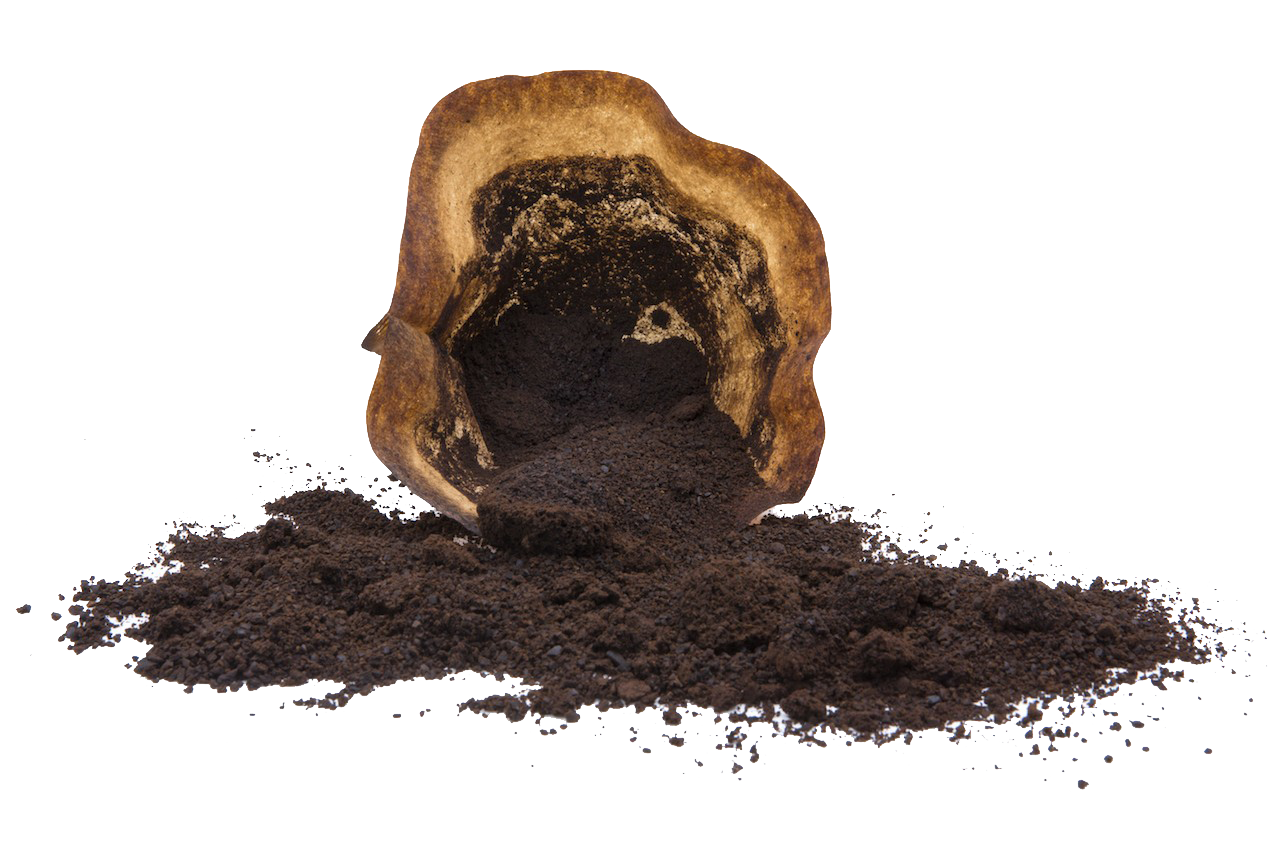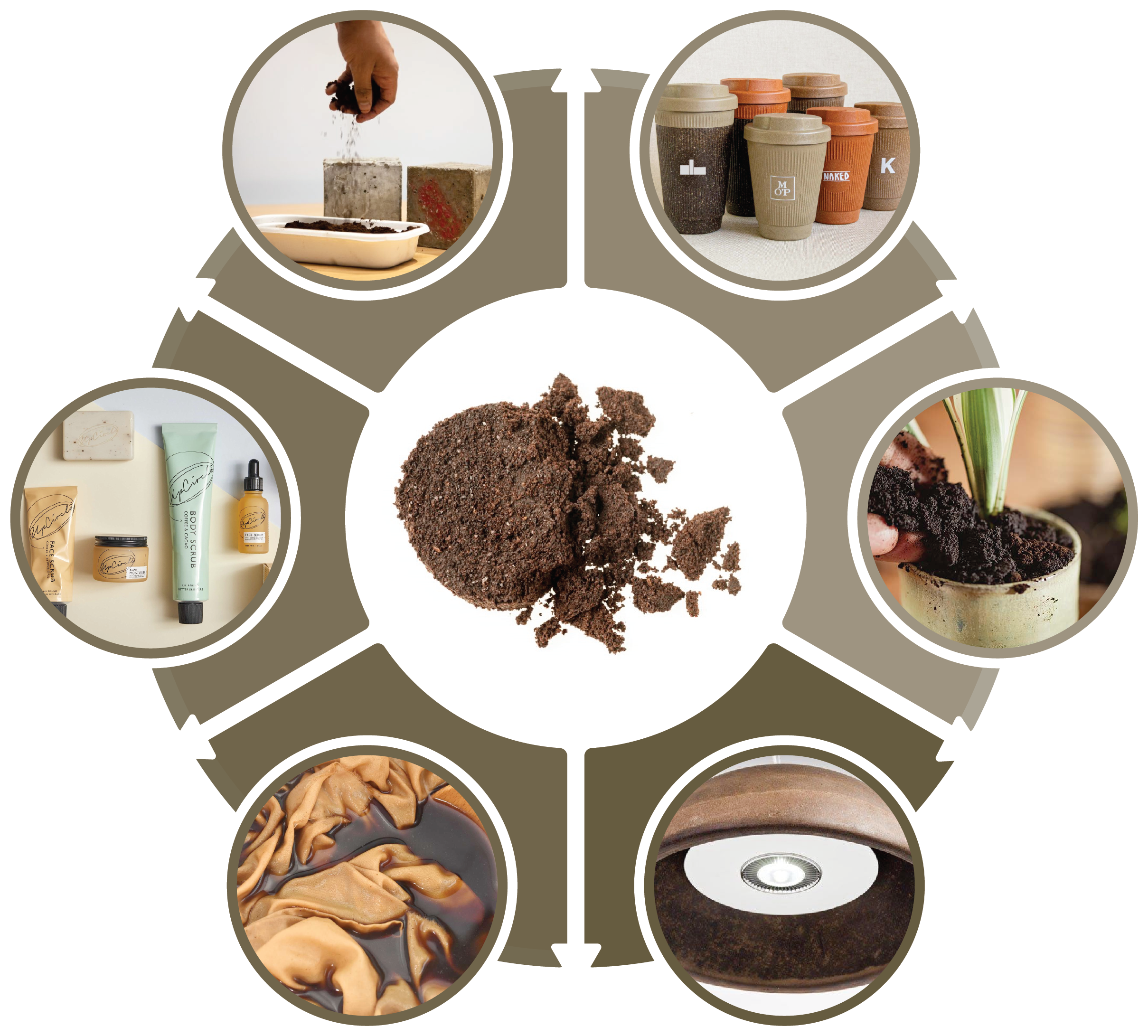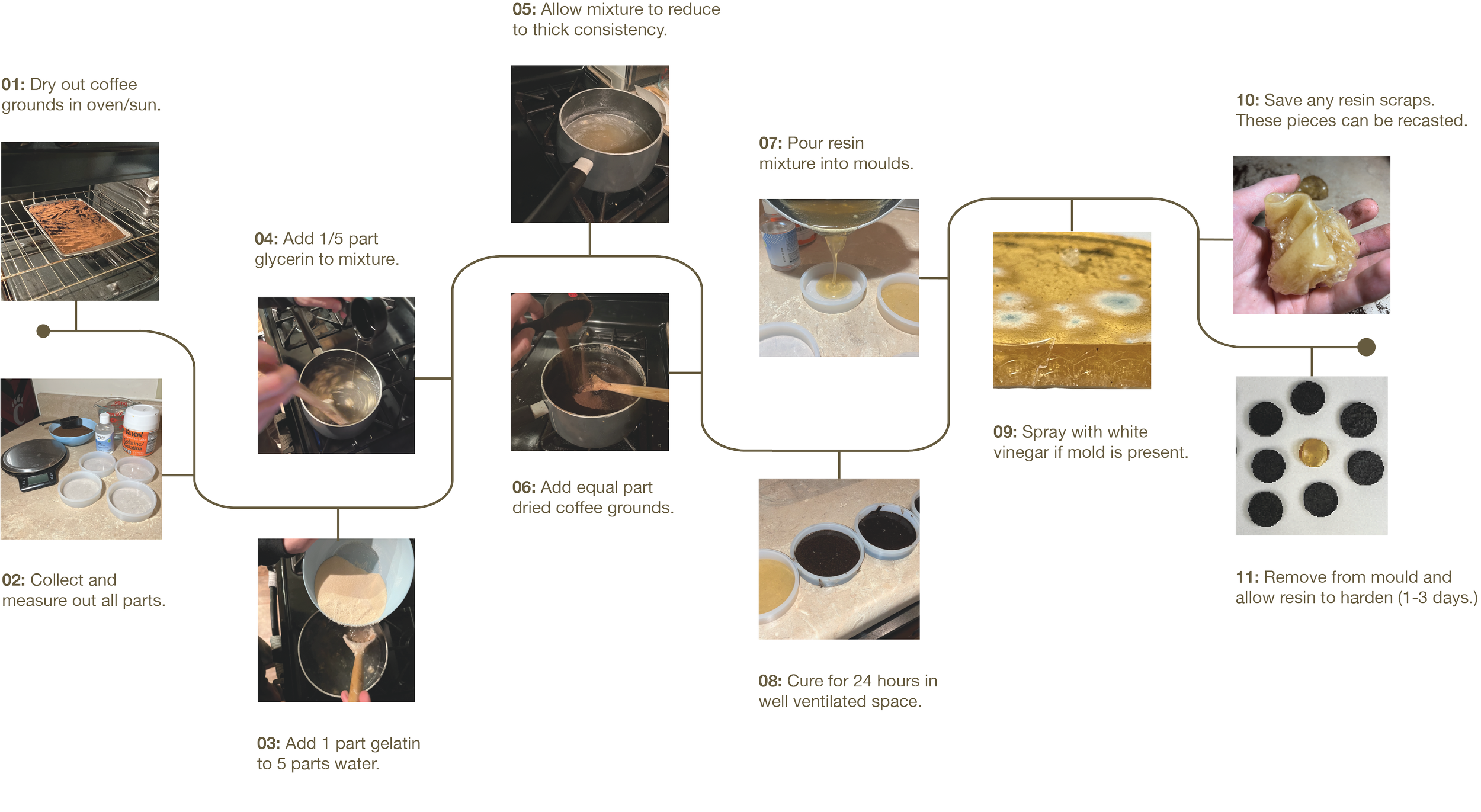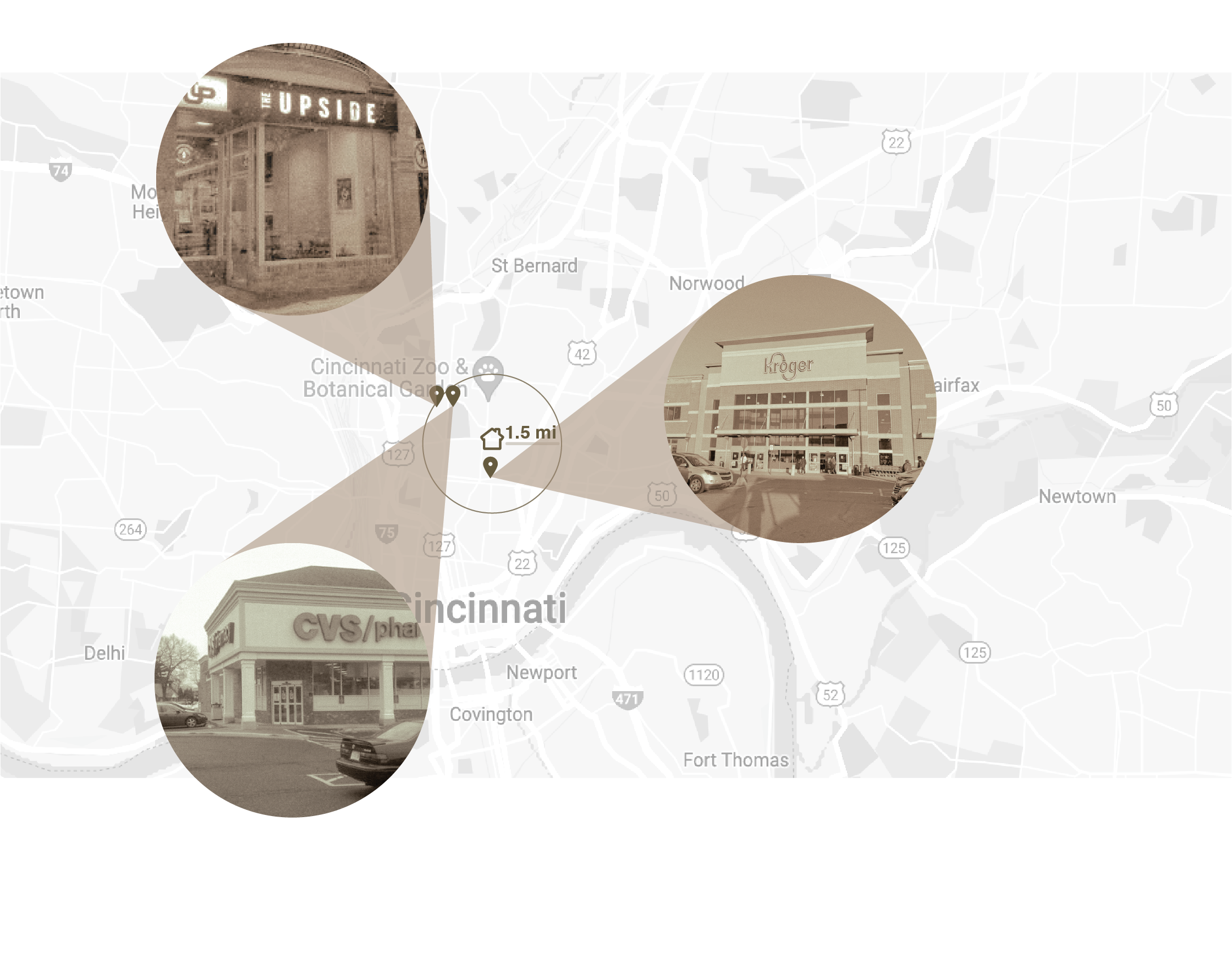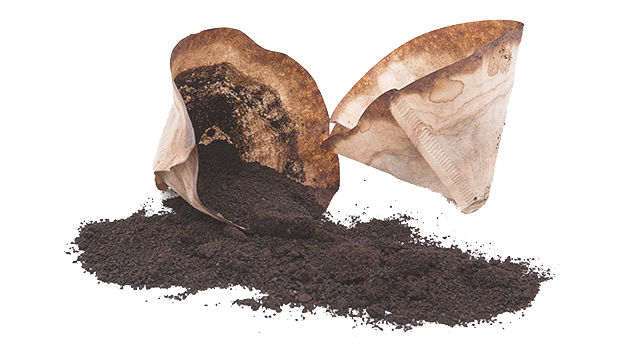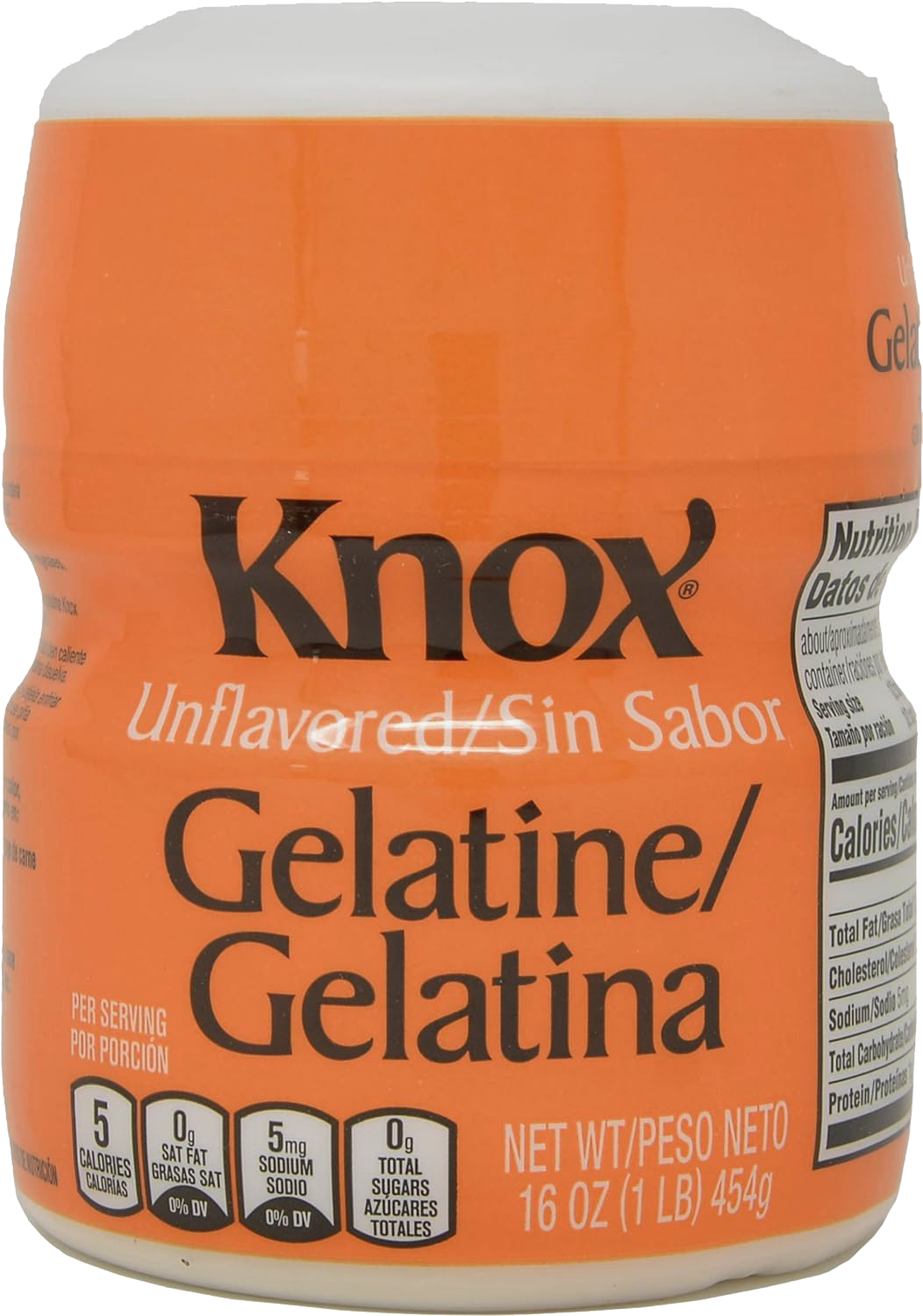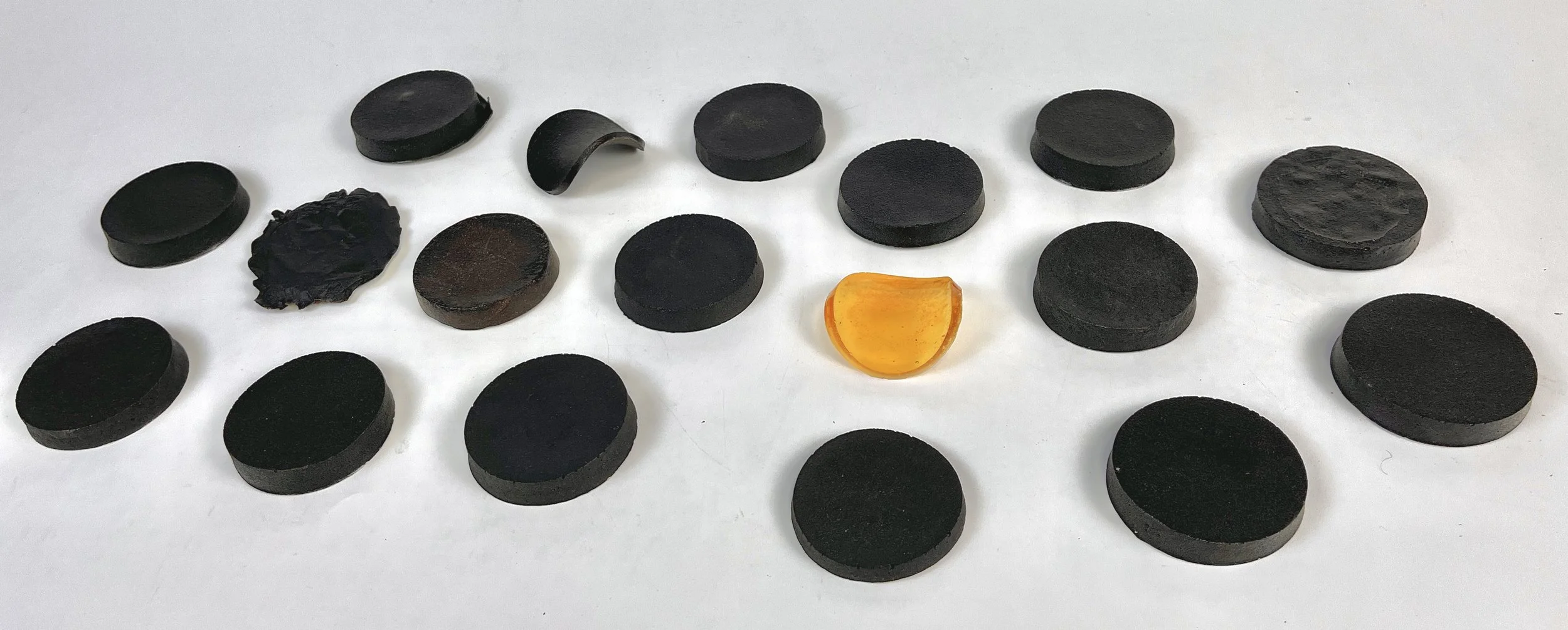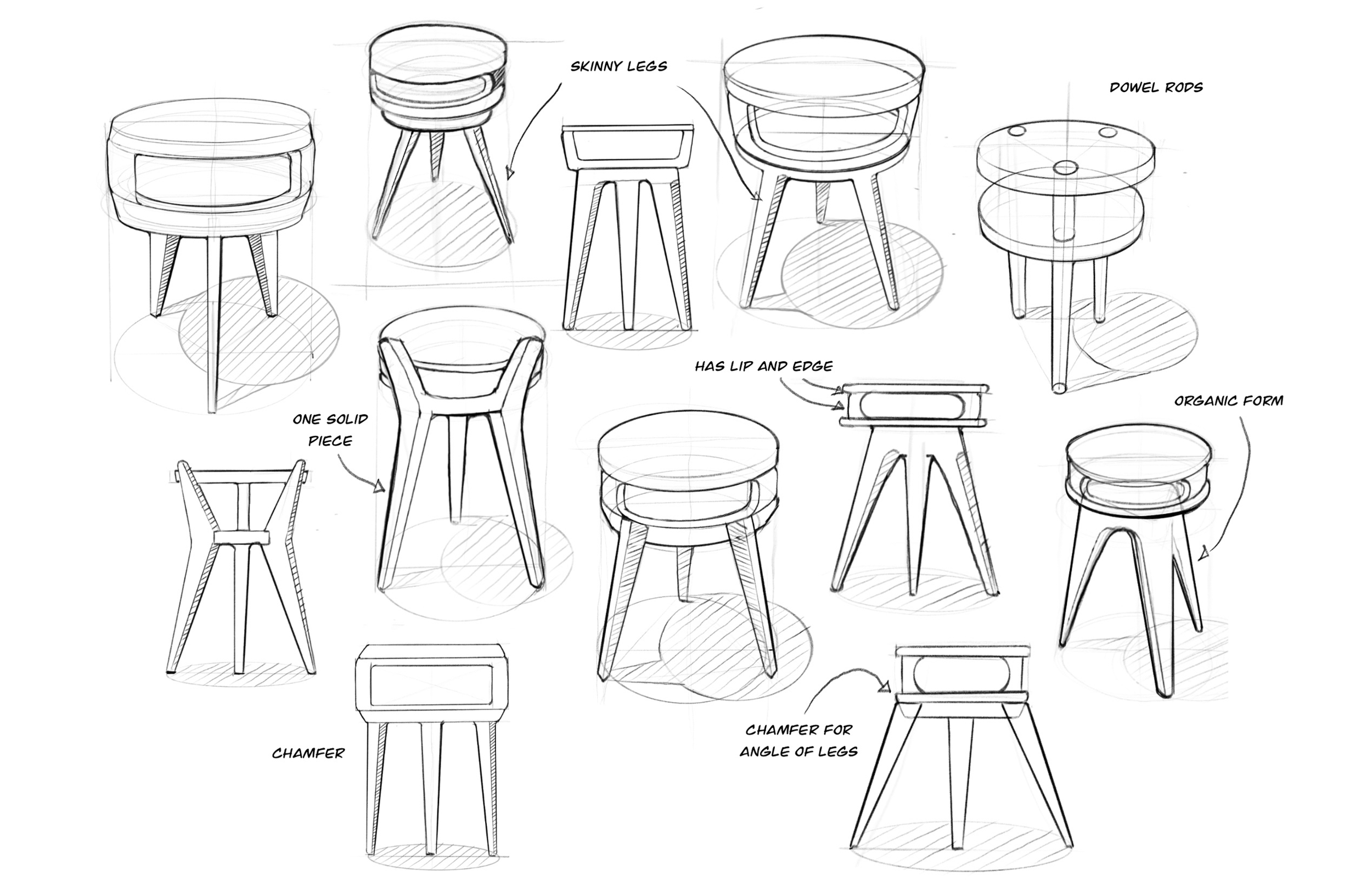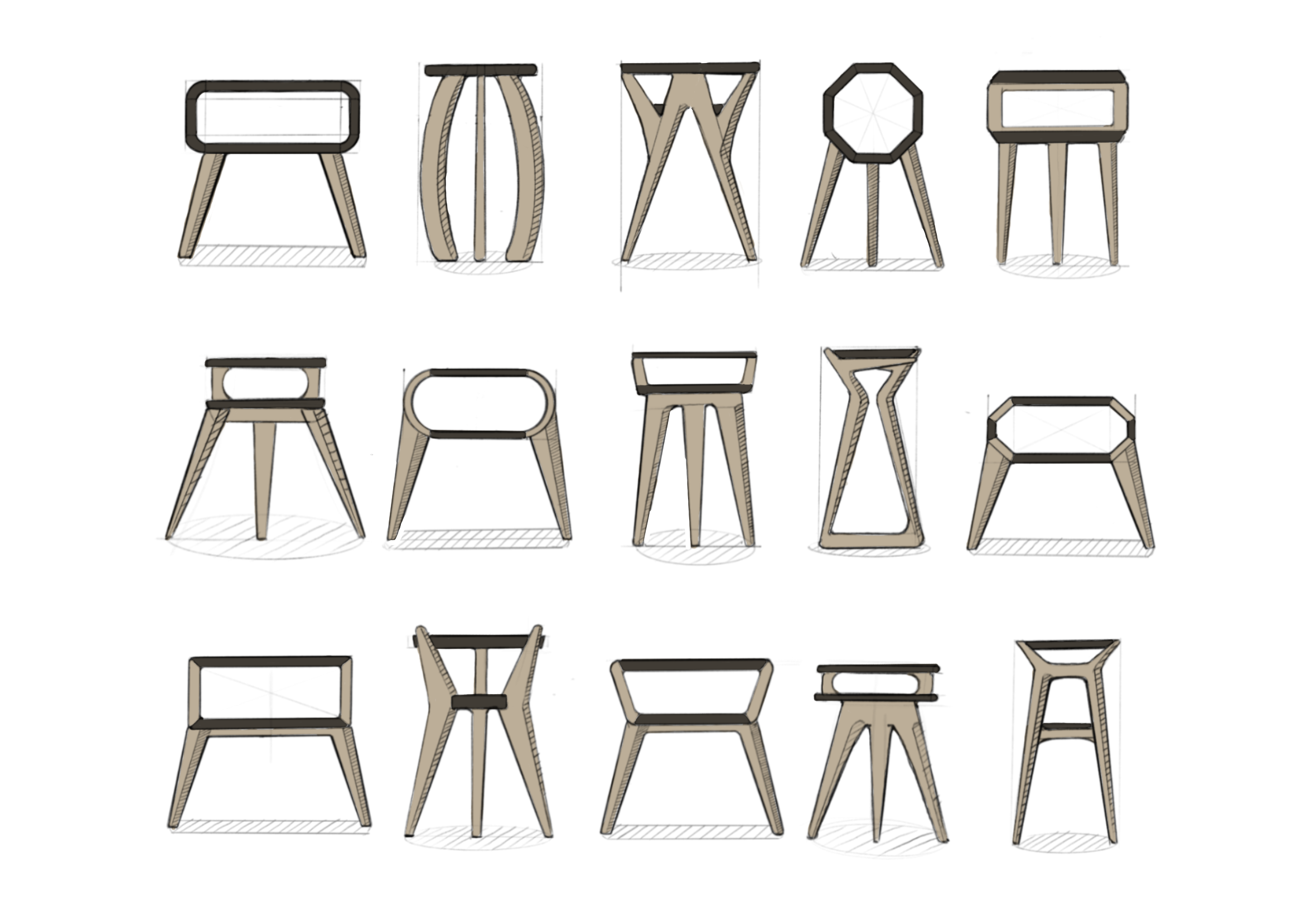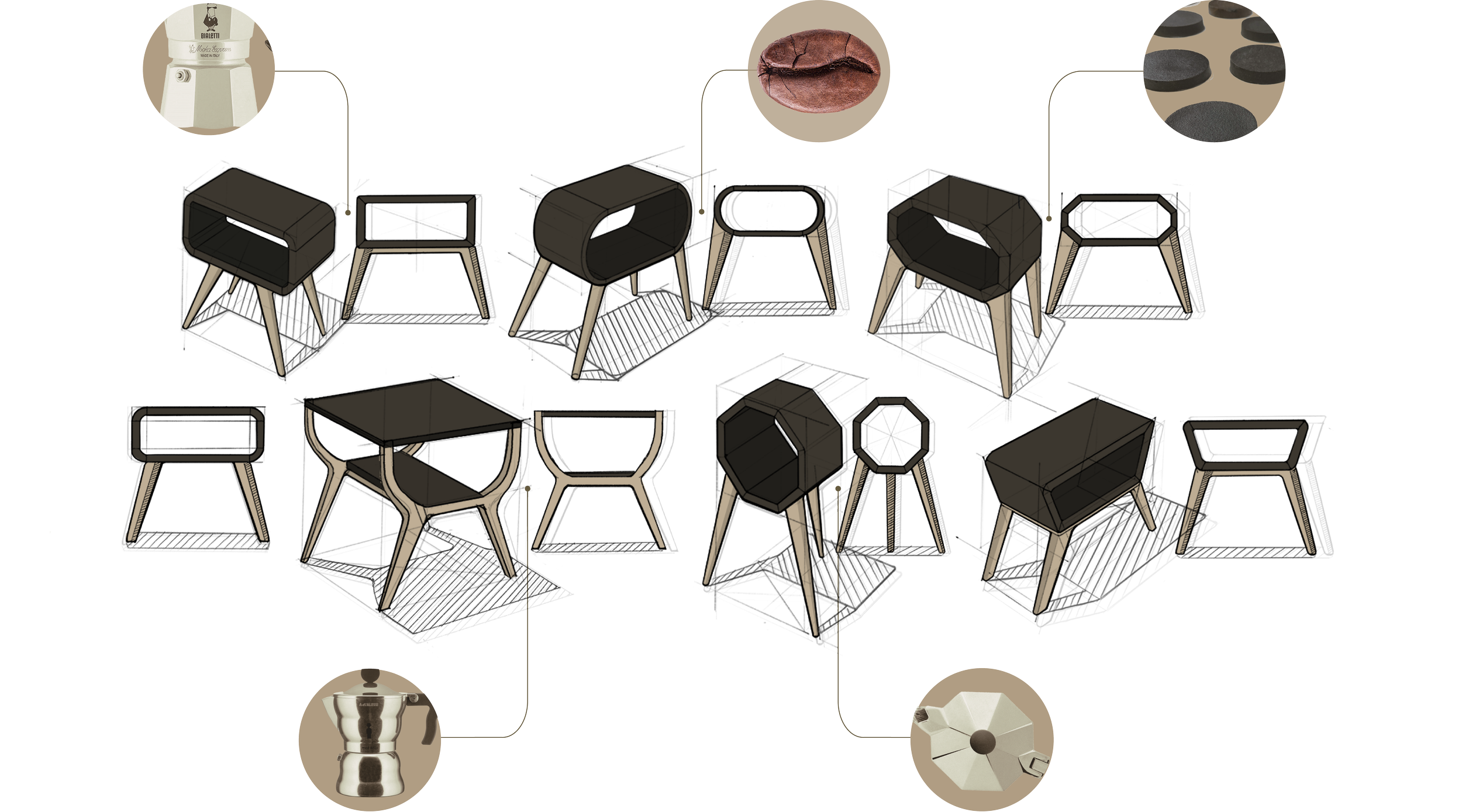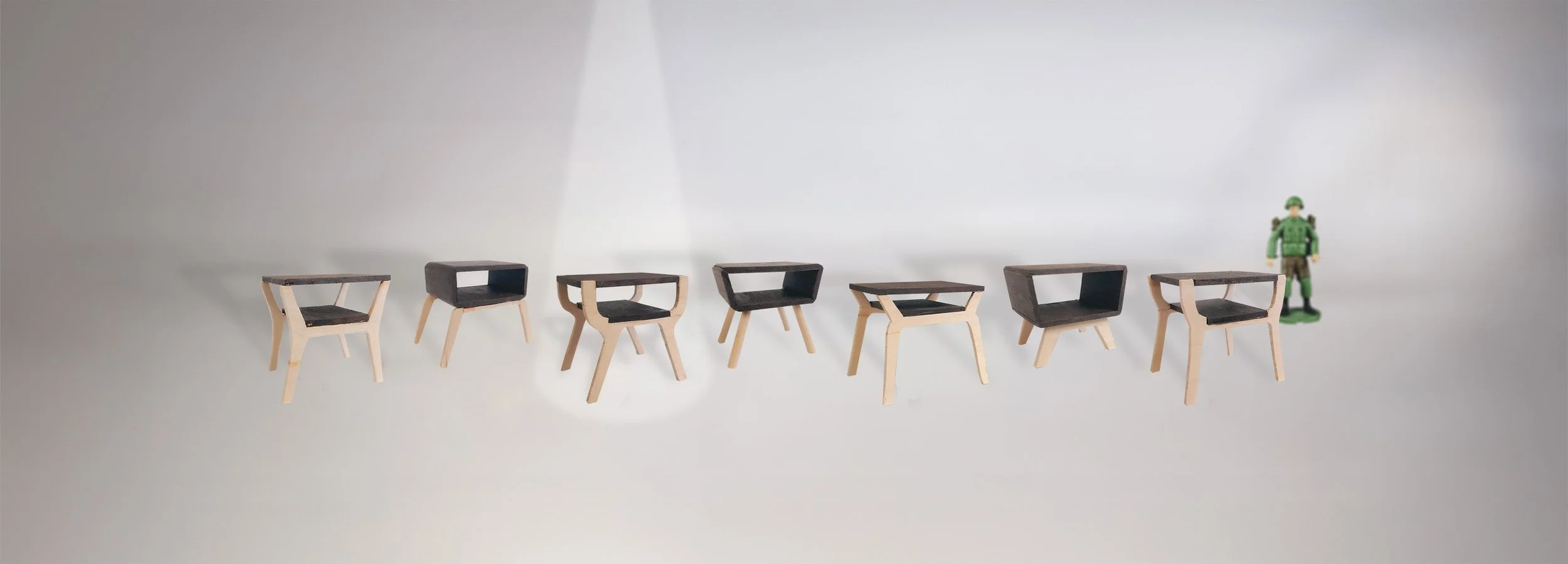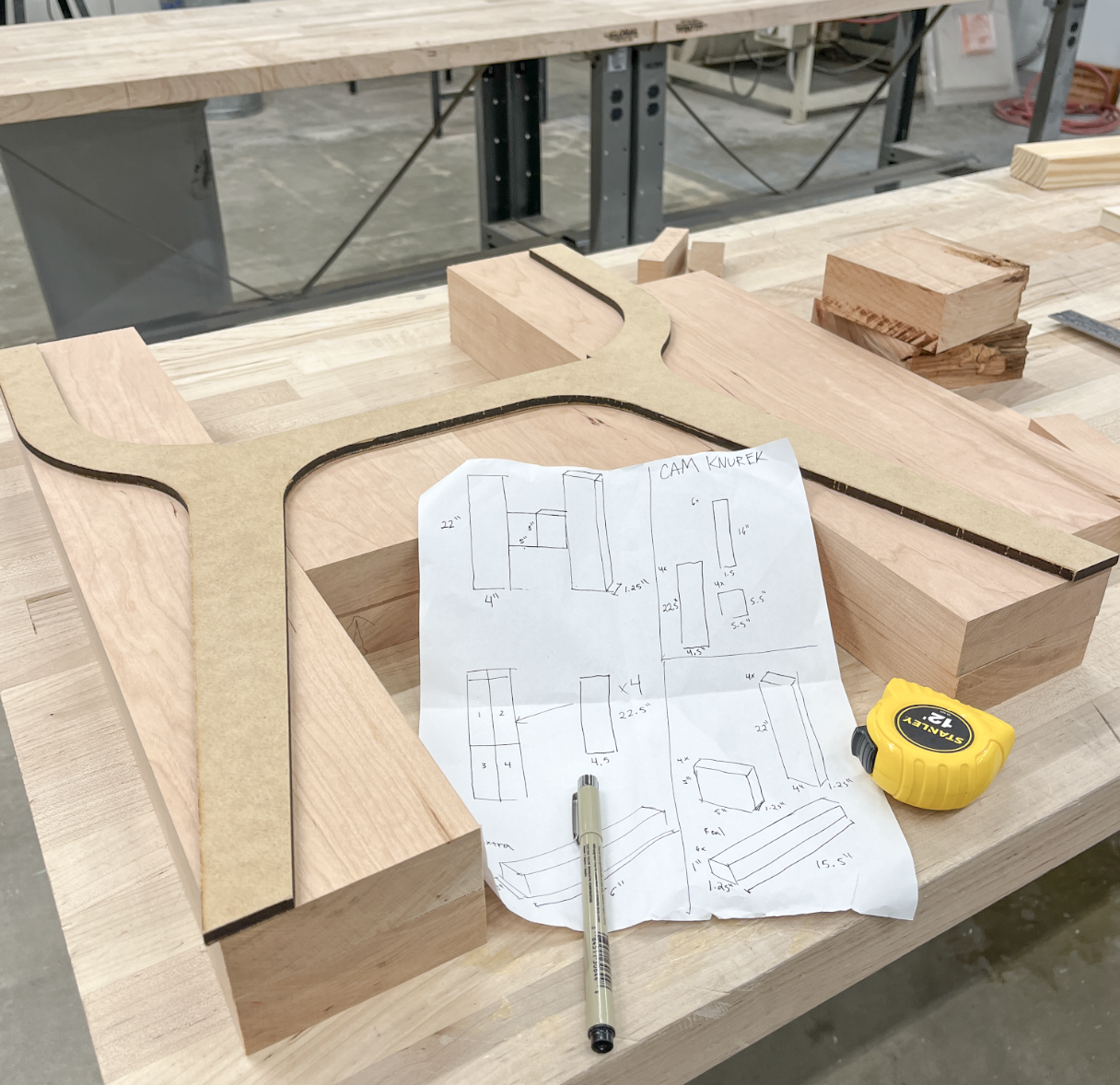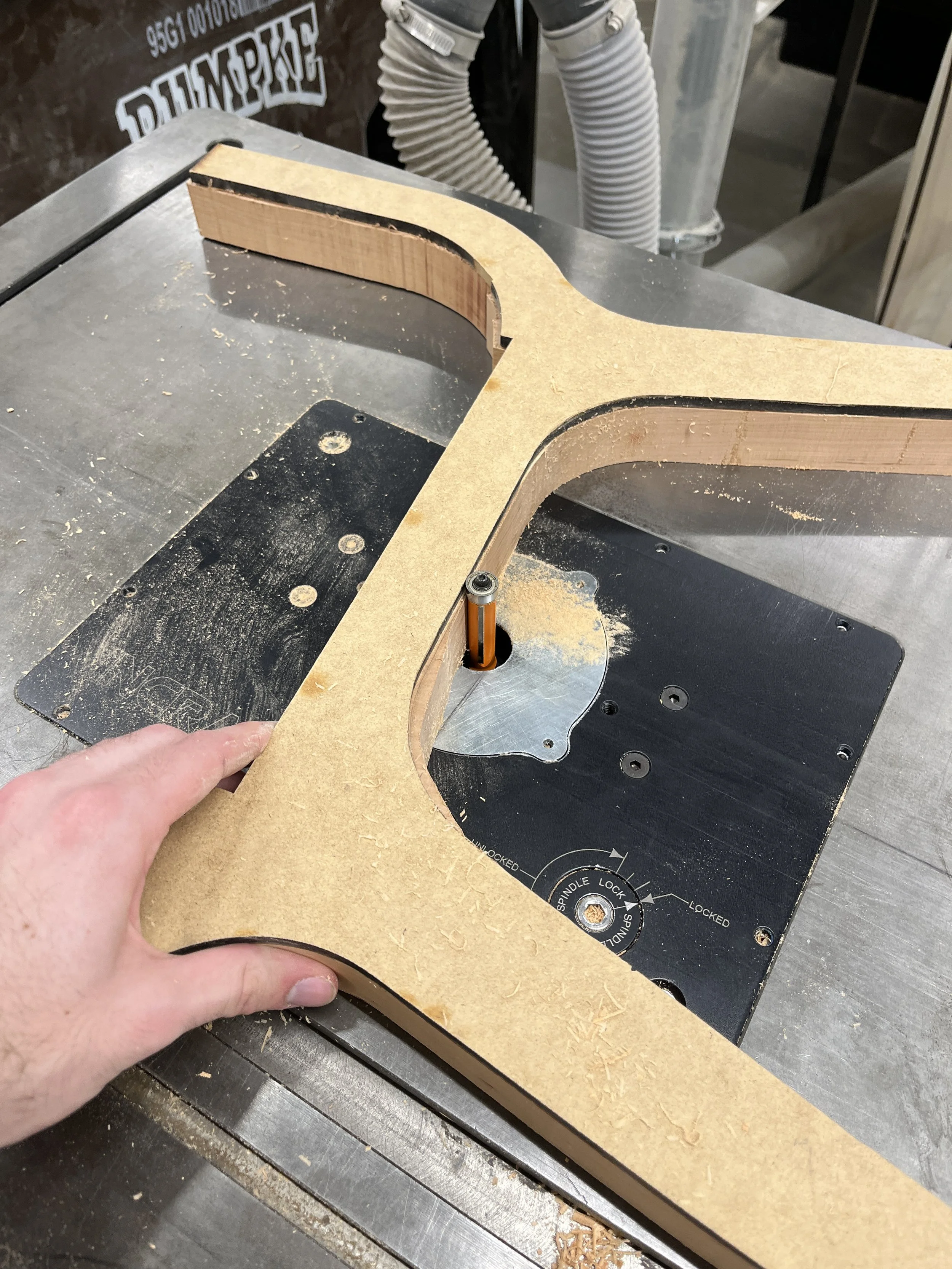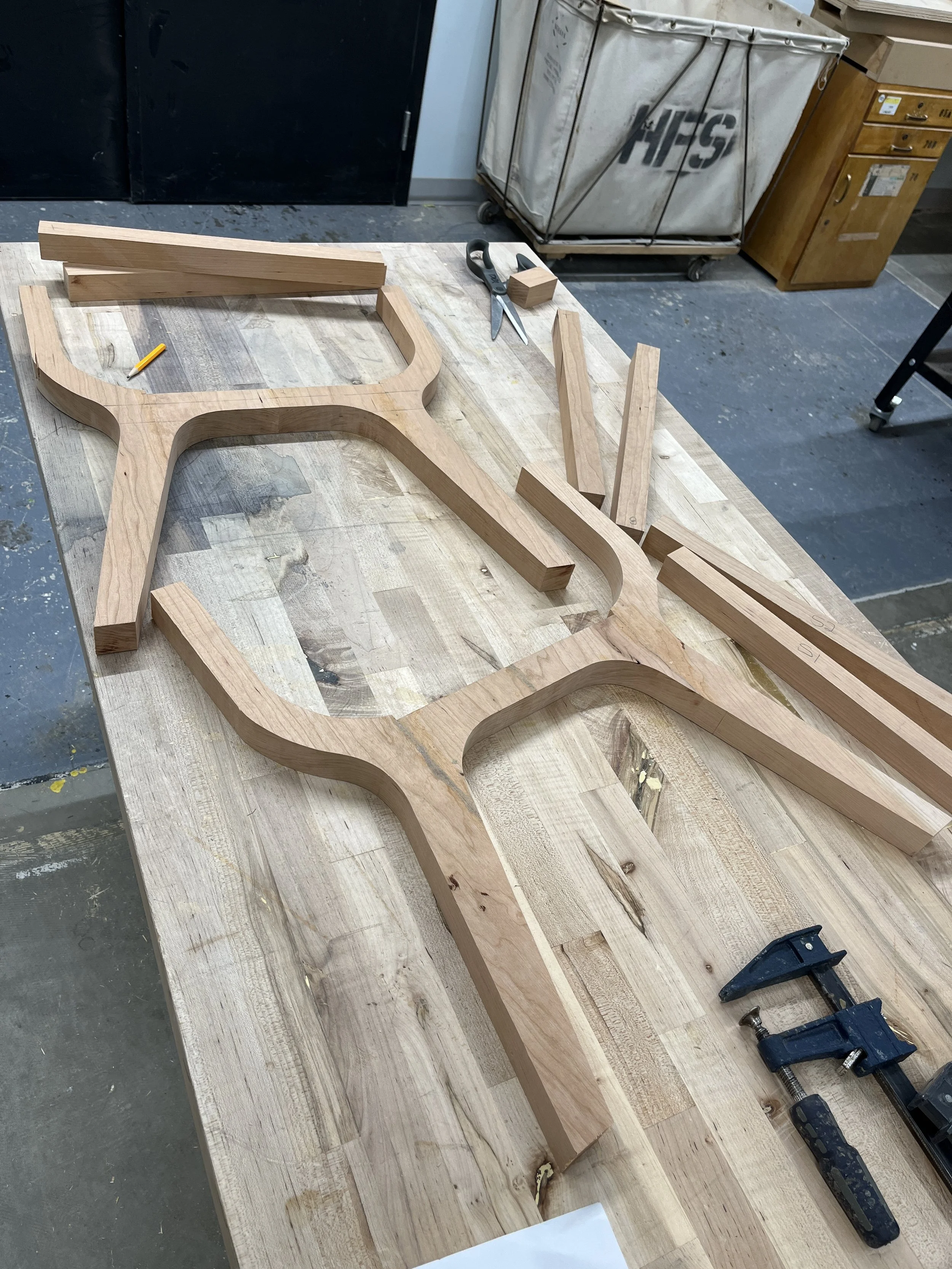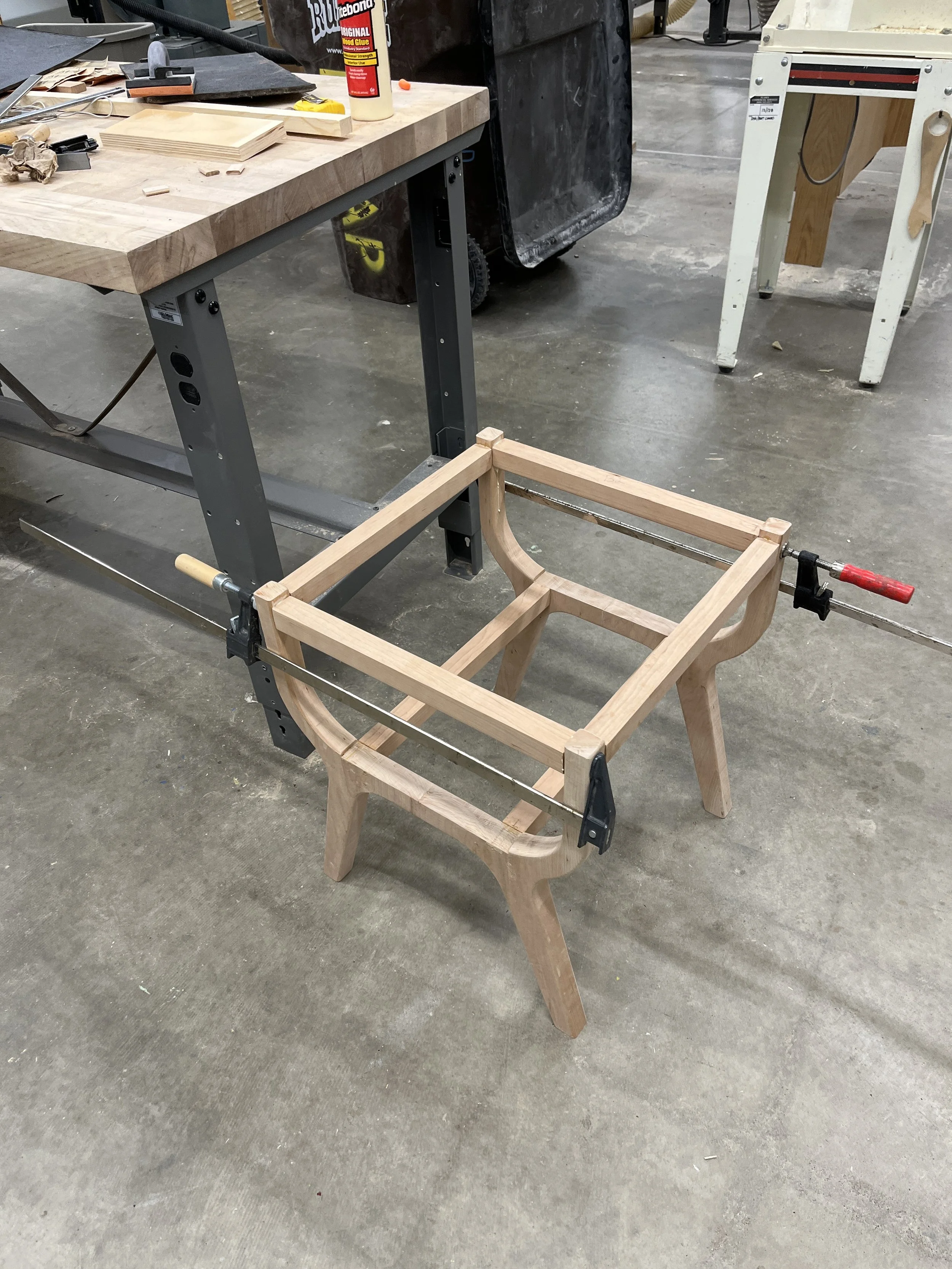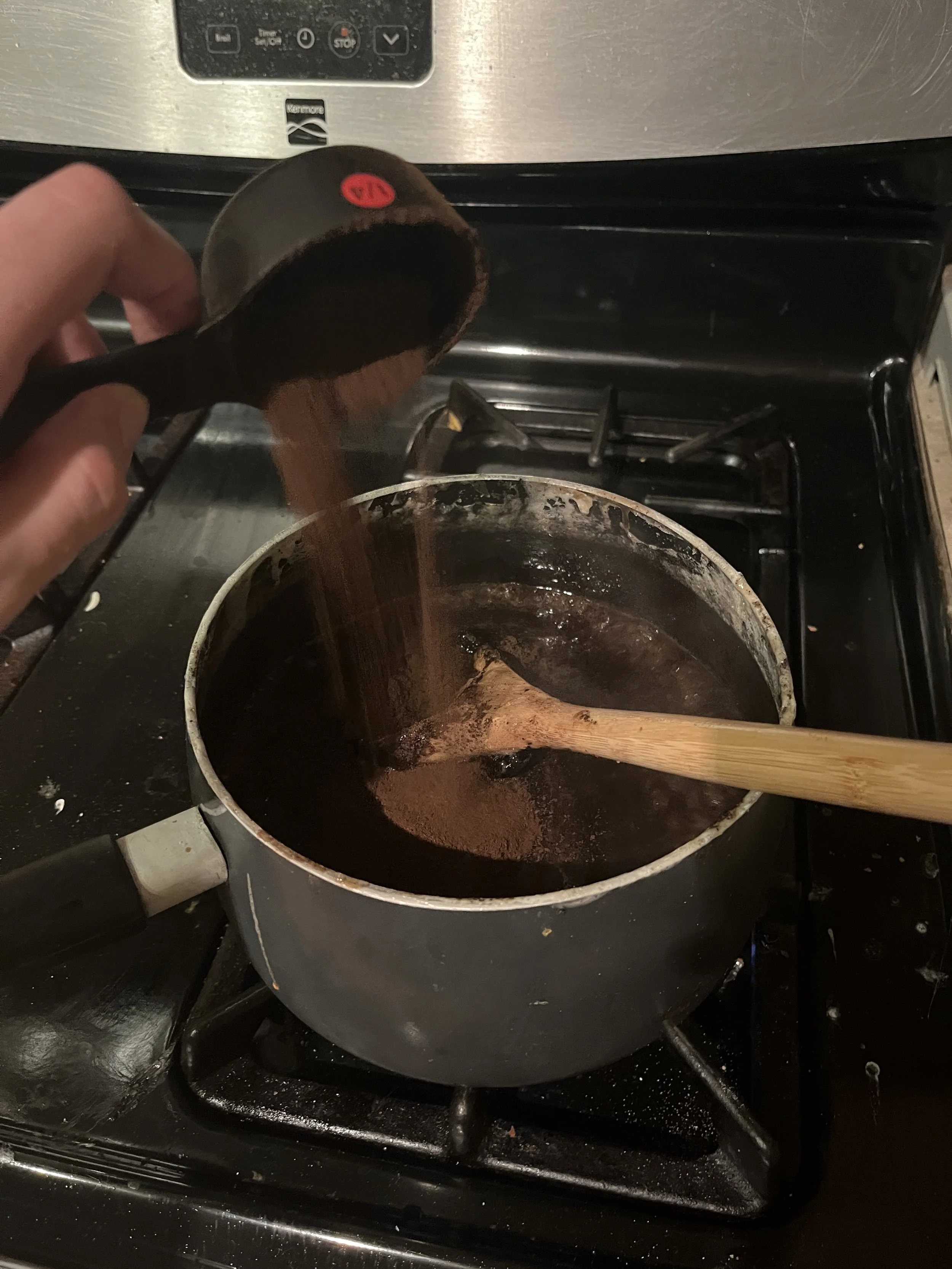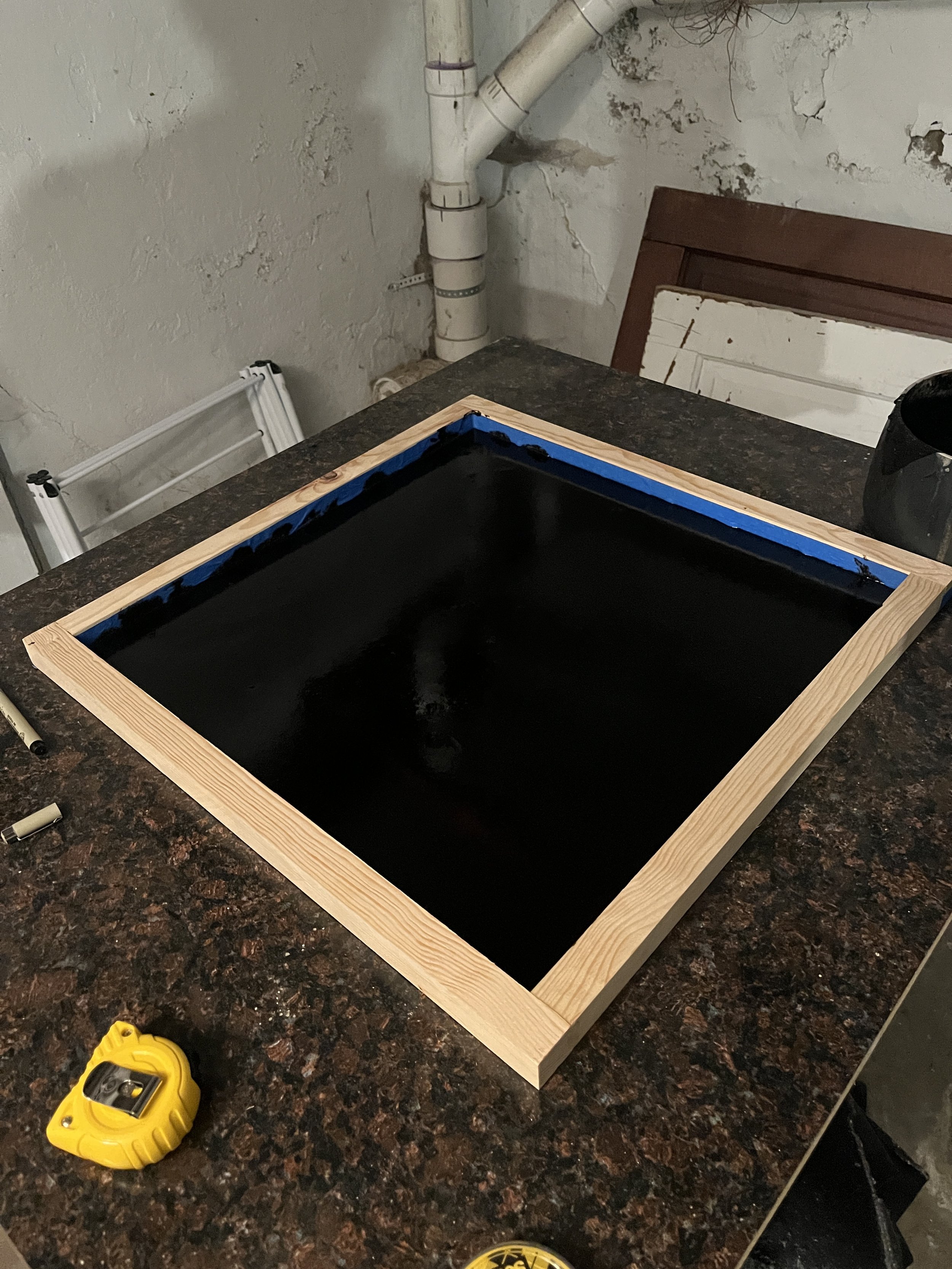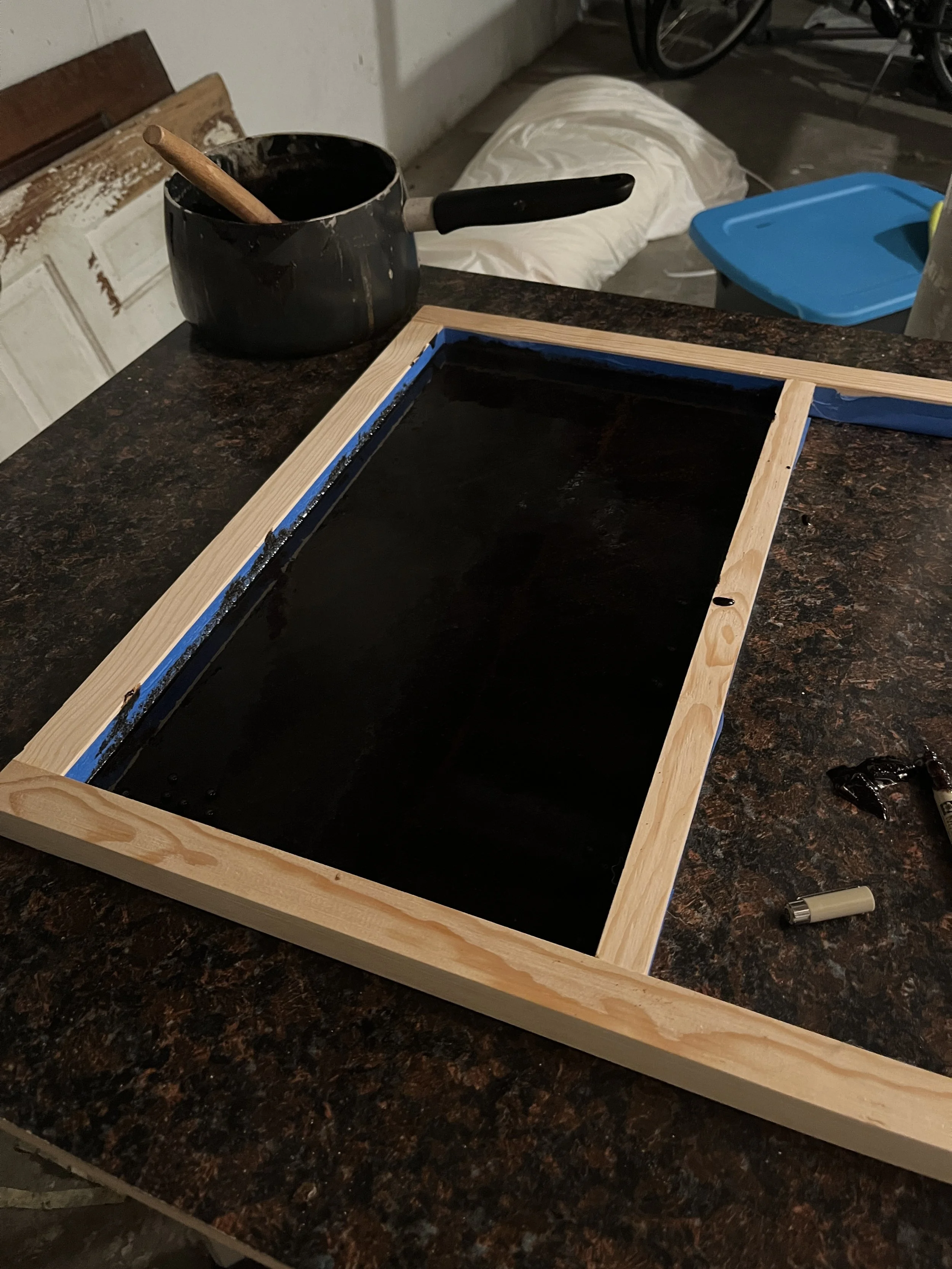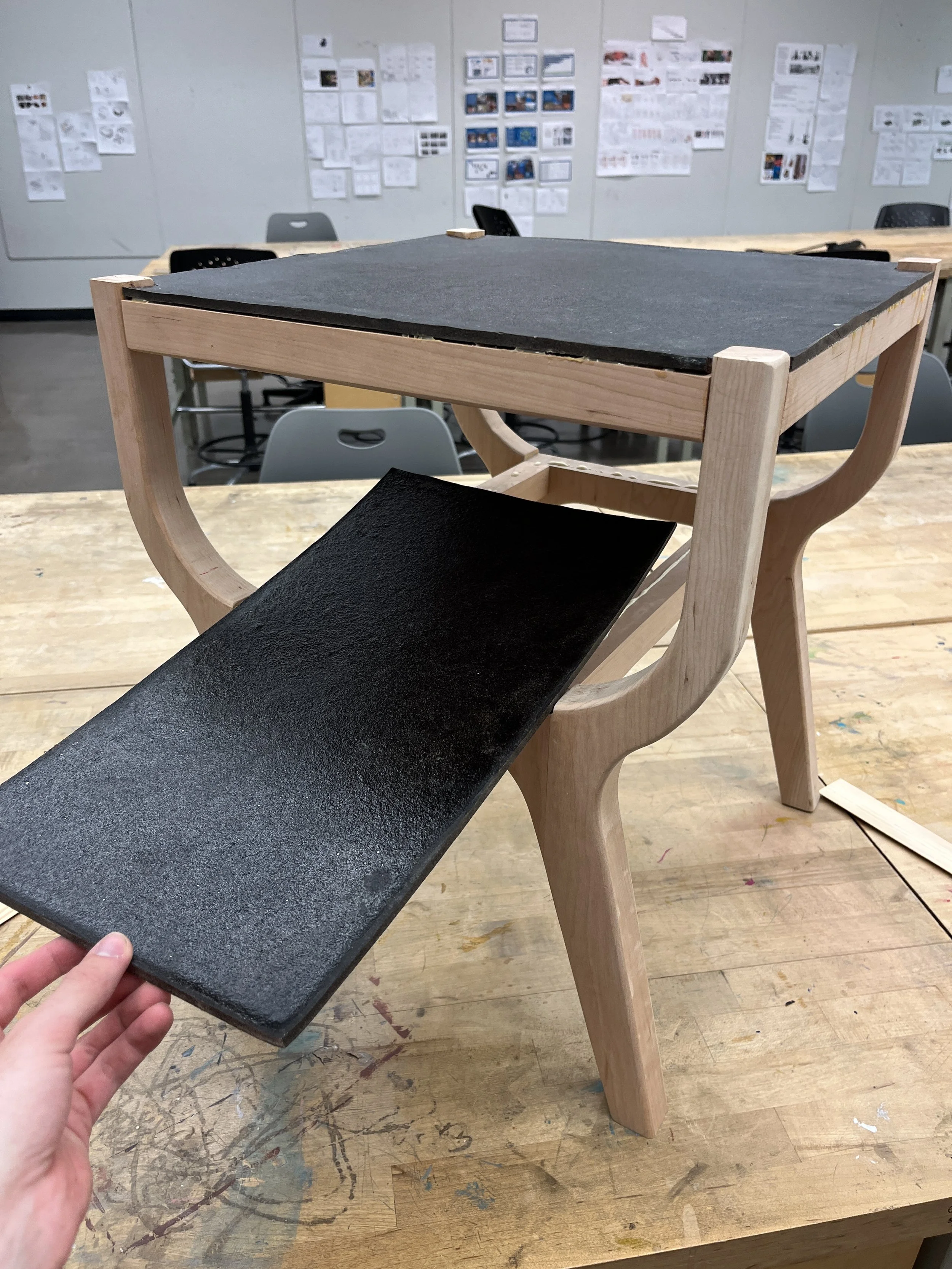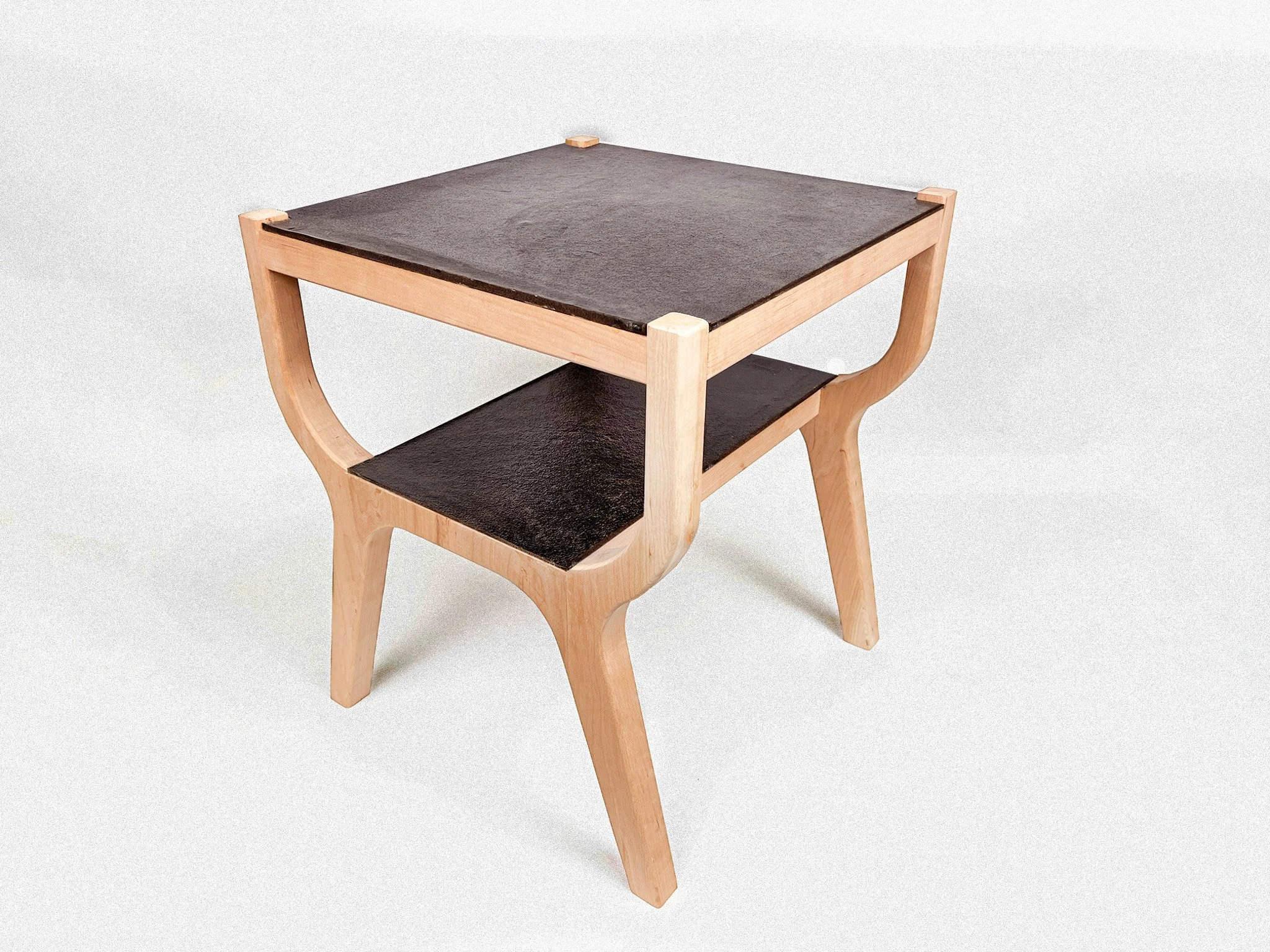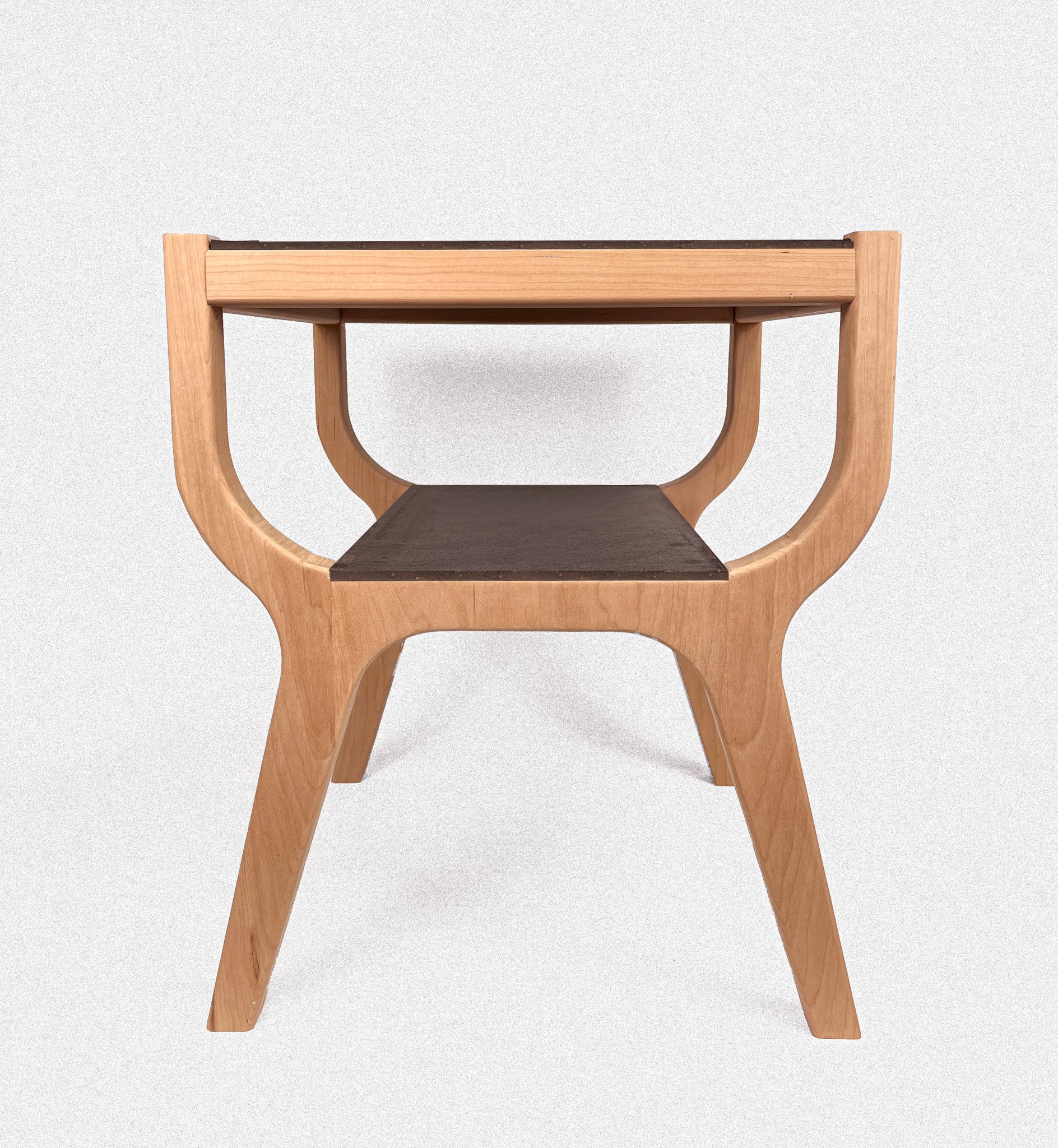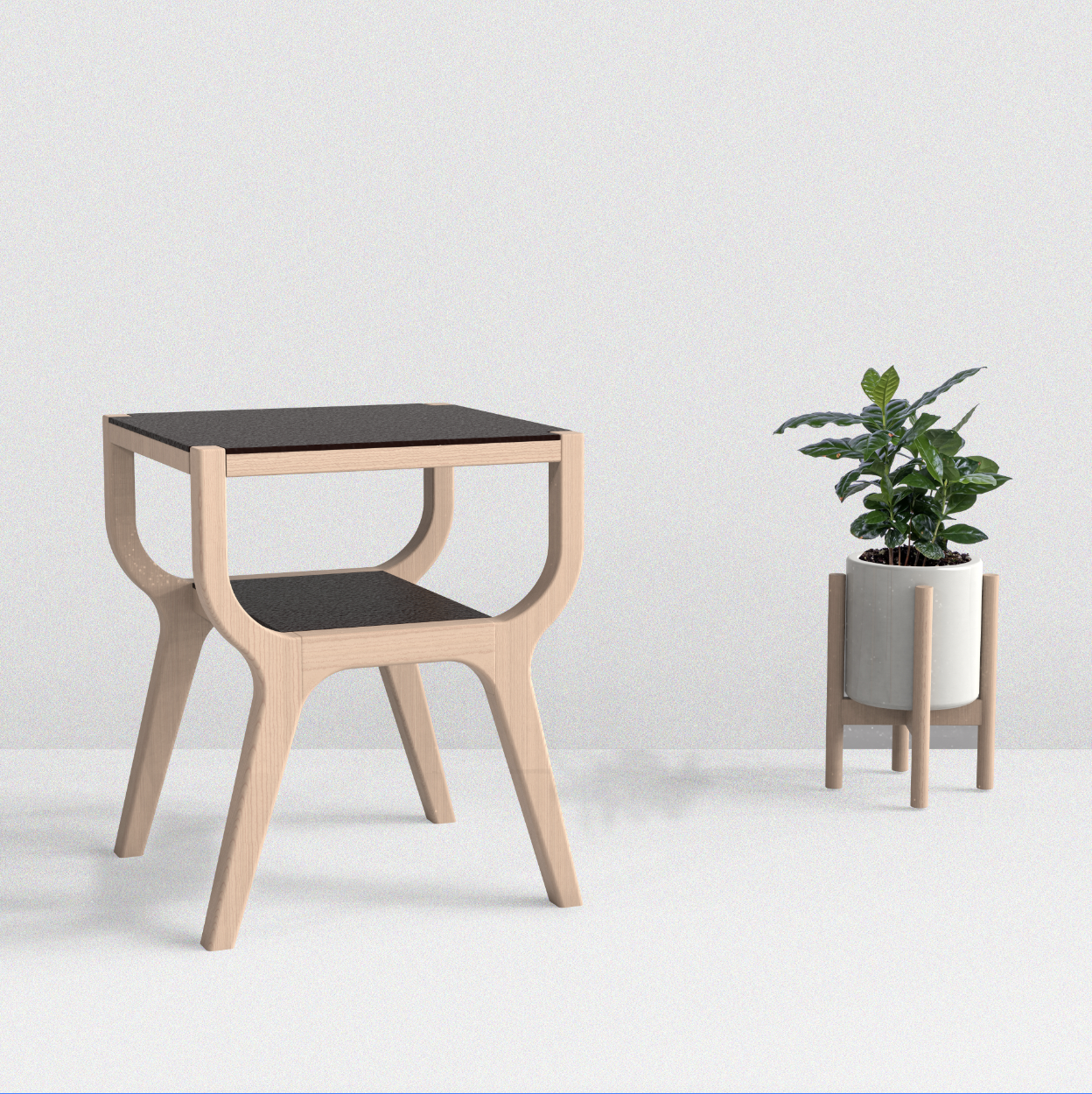
Caffé Table.
Turning coffee waste into furniture.
Life Cycle of a Coffee Bean:
Woah! That’s a lot of effort for a little bean.
What Happens to Coffee Grounds After They’re Used?
23 million tons of coffee waste is produced each year around the world and 75% ends up in landfills.
Used coffee waste that ends up in landfills emits methane gas which traps 25x more heat in the atmosphere than carbon dioxide.
This abundant byproduct has been utilized in innovations with agriculture, design, engineering and more.
How can we utilize used coffee grounds in products?
From exfoliating creams to rigid materials used in construction to fertilizer, coffee waste presents endless opportunities for innovation in the realm of material science.
Consisting mainly of polysaccharides (the molecules that bond together in starches and foods), proteins, and minerals, coffee grounds can be utilized as a coarse substrate in bio-materials.
How can I utilize coffee waste to create an accessible material that promotes innovation in sustainability?
My goal in this project is to create, utilize, and share an open source recipe for a coffee waste derived bio-material and to display how it can be used in product design.
Natural Dyes
Agriculture
Furniture/Objects
Beauty Products
Concrete Additive
Packaging/Containers
Bio material process:
Sourcing Ingredients:
In an effort to promote accessibility all ingredients were sourced within 1.5 miles of my home in Cincinnati. The material requires the following:
Used Coffee Grounds (Free): Adds structure/reinforcement while increasing total yield volume.
Gelatin ($15/lb): Acts as a polymer, allowing the resin to become solid as it cools after synthesis.
Glycerin ($8/6 fl oz): Acts as a plasticizer that bonds with the gelatin and allows for flexibility prior to curing.
Material Properties:
When working with this bio-resin, I noticed that the properties introduced when adding coffee ground made this material made it ideal for high contact areas. These features included being:
Non-Toxic: Derived only from plant and animal based ingredients, the material is non-toxic to humans.
Scratch Resistant: The rigid and dense nature of the material makes it particularly strong against sharp edges.
Recastable: The material can be broken down into small pieces and melted to be recast.
Ideation Sketching
Wanting to make an end table, I ideated pieces inspired by the geometry of coffee related objects. Wood was chosen for the legs as the material has a natural relationship to coffee’s plant origin.
1/18 Scale Models
Coffee Grounds | The Upside Brew
Glycerin | CVS Pharmacy
Gelatin | Kroger
Material: Basswood and brown paint.
Making:
Final Work
01. Growing.
02. Harvesting.
05. Packaging.
03. Shipping.
06. Transporting.
07. Brewing.
04. Roasting.



